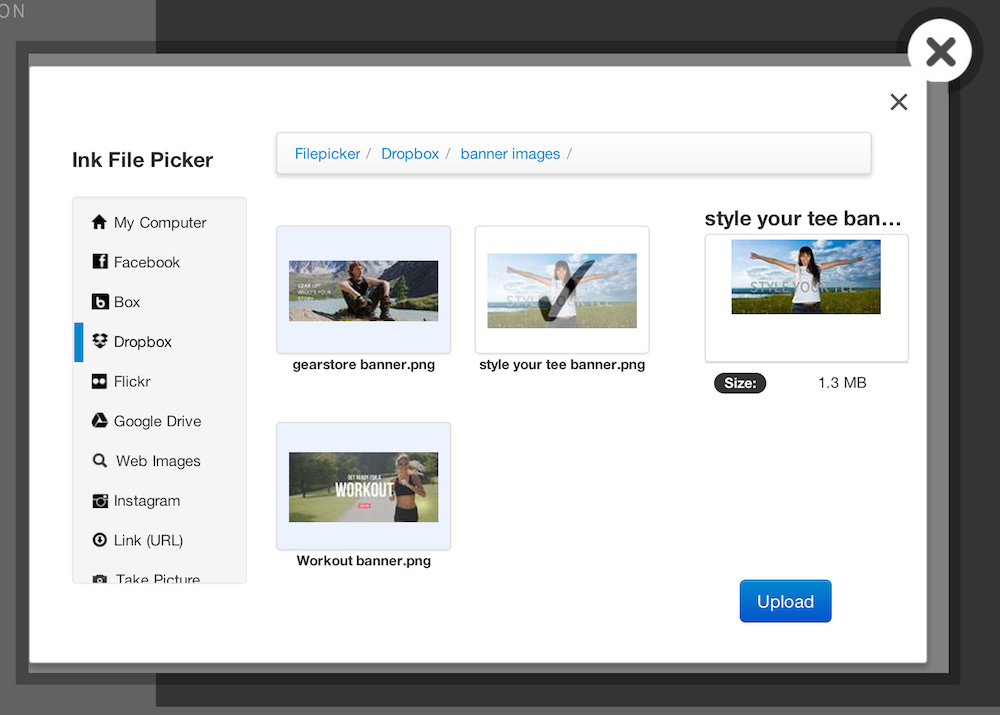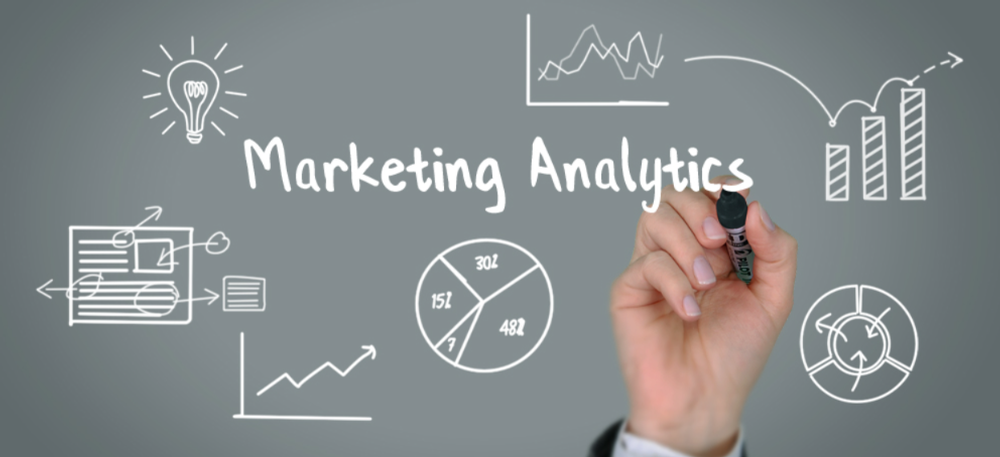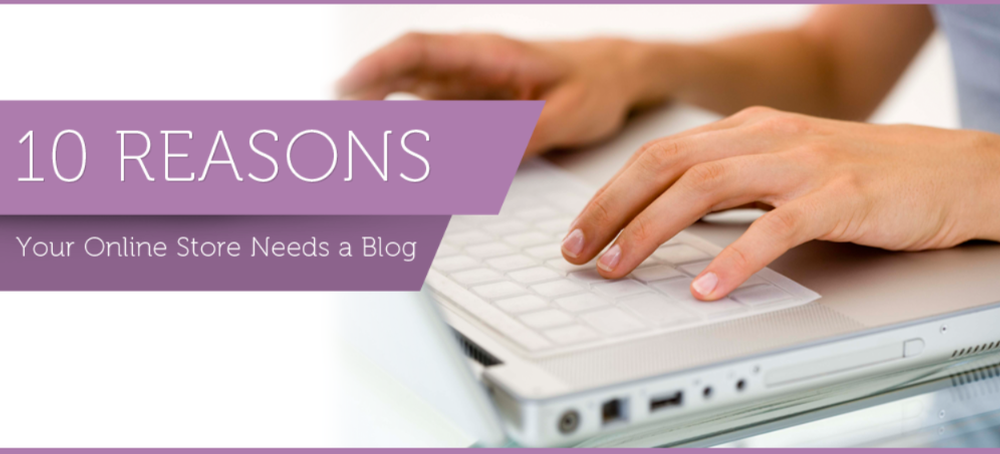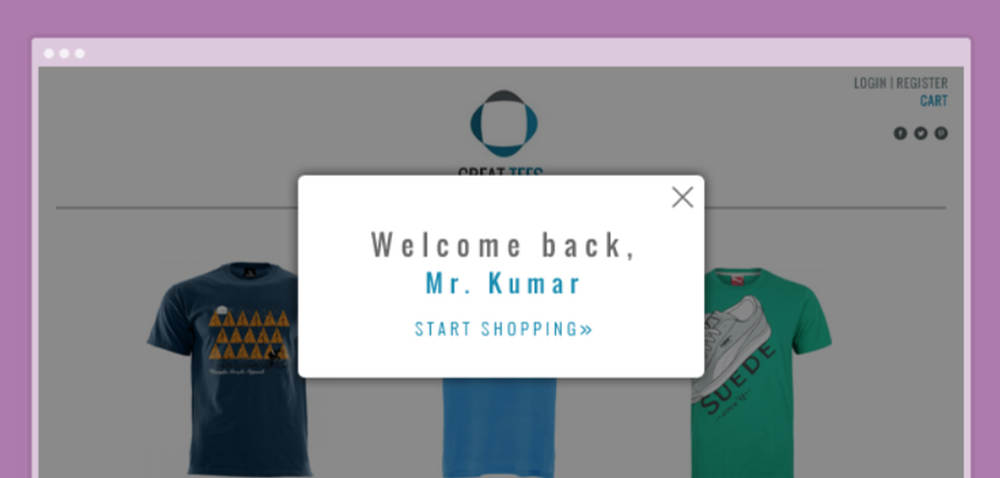Using Marketing Analytics to Make The Right Decisions
Our recent blog post took a look at why you need marketing analytics and how it can help you streamline your marketing efforts. Here, we’ll explore what kind of data you need to study and how it can guide your marketing decisions.
Let’s consider what kind of data you need to mine from marketing analytics.
Website Performance: What to Track
You will have visitors coming to your online store from many different places, like Facebook, Twitter, blog, email links, organic search, Google Ads, etc. Website Analytics will not only help you indentify which channels of incoming traffic are leading to conversions (ie sales), but will also provide a large amount of valuable data like conversion rate, lifetime customer value, and cost per acquisition.
These figures can give you meaningful insight into what is performing effectively and what isn’t, thus helping you to decide how to allocate your marketing budget across various channels.
Sales: What worked?
Focus on actual sales and conversions on your website. Go as far back as possible in users’ behavior to track down the path of clicks from how they entered to your online store all the way up to actual sales. Did a click from a text ad on Google search bring the sale? Or was it a link on Facebook? Maybe discount coupons in emails led to terrific sales!
Find out everything you can about what worked. If you compile enough data, you will start to see trends and be able to identify which channels work better than others in bringing in sales. You will also find out what kind of products the user was interested in and you can target your ads accordingly using remarketing tools. (Read more in our blog post covering remarketing).
Offline and Online Metrics: Consider Them Together
If your marketing strategy includes both online and offline marketing, it is important to ensure that the data record does not get interrupted in-between. So, for instance, if you advertise in a local newspaper or you give out leaflets with discount coupon codes on it, it is important that you keep records of these channels so that you can later combine both the online and the offline records to get a holistic picture of how well your marketing efforts are creating conversions on your online store.
There are many ways of doing this. For instance, in the case of discount coupon codes, create a separate coupon code for different channels, e.g. your Facebook ad can have the code FB123, while the code in your emails can be EM123. You can then look at the records of which codes were used to get an idea which channel was more effective in bringing in sales.
Vanity Metrics: What to Avoid
There are lots of metrics available that do not add any meaningful insight into what helps the bottom line. But easy availability of these metrics makes it very easy to get distracted by them. These metrics are called Vanity Metrics and they include elements like page views, time spent on site, number of pages visited, etc. These numbers do not add any value to your marketing strategy and are best avoided, to save time.
Social Media: Keeping a Bird’s Eye View
If there are any social media networks, like Facebook or Twitter, that you use to market your online store, it is important you use marketing analytics tools to keep a bird’s eye view of your performance there. You need not pay attention to every single like and share, but it is important to know where your audience is coming from whether the network is leading to website visitors and especially buyers, the demographic breakdown of customers who found your website through social media, etc. There are many tools that can make it easy for you to access this data, e.g. Google Analytics.
We will provide more in-depth information on various tools that can help you get the right Marketing Analytics data in our next post in this series. In the meantime, you can start identifying the most critical types of data you are going to need with regard to your own marketing efforts. Watch this space for more!
Related Articles
Top 5 Reasons Why Marketing Analytics is Critical to Your Success
10 Tips on Writing Content for your Blog
So you have decided to start a company blog on your online store/ website to drive more traffic, promote your business and engage your target audience. But what should you write on your blog? What kind of content is considered appropriate for a business blog? And, how to create content that will benefit your brand as well as your bottom-line in the long run?
Here are 10 ideas on what to post on your company blog:
1. Tell your Story: People are inherently interested in stories, and you can use your own story to develop interest in your brand. Talk about how you got the idea, how you met your collaborators, how you came to start your business, etc. If there are some really interesting facets to your brand, talk about them - the designers, the craftsmen, the techniques, etc. Introduce the people on your team, talk about their dreams and aspirations. The more people get interested in your brand, the more they will care about it.
2. Make Announcements: Whatever announcements you may have with regard to your brand- whether it is a new product launch, a new collection, a season-ending sale, use your blog to make these announcements. The blog provides a whole new channel as well as attracts a different section of your target audience.
3. Answer your Customers’ Questions: There is an important caveat here and that is ‘before they ask them’. You are surely aware of your target audiences’needs, concerns, demands, questions, etc. with reference to your products. Address these issues long before they actually come up. Use your blog to provide all the relevant information your potential clients are likely to need with reference to your brand, company and products.
4. Educate your Customers: Apart from pre-empting the questions your potential customers may have while buying your product, you can also use your blog to educate your customers in using your product most effectively and efficiently. If you have any guides, tutorials, how-to videos, etc. post them on your blog. Not only can you use this as a ready resource when your clients make a purchase, you also develop a reputation for being concerned with customer satisfaction.
5. Get Customer Feedback: Undoubtedly, a lot of market research goes into product development. You already know what your customers want and you have developed a product to fulfill that need. How about finding out exactly how your customers will respond to your products BEFORE you launch them? Use your blog to provide sneak previews of your products and get feedback on them from the very people who are going to be using them. You will have time for fixes, changes and troubleshooting before the launch, should the need arise.
6. Create a Platform for your Customers: Use your blog to create a space dedicated to your customers. Add their pics taken with your products, post their comments and testimonials, answer questions that they may have, link to blogs they may have written about you. Your blog can become a community space to help create a community of your customers.
7. Provide Industry News and Information: This is your opportunity to establish yourself as an industry expert. Report and remark on important industry news, identify and analyse trends that you see, write your opinions on how your industry can create a greater impact.
8. Create Engagement: Fun engagement opportunities can bring tons of traffic to your blog if done right. For instance, run a photo or a caption contest on your blog. Announce the contest, provide all the rules and guidelines, keep updating the page throughout the duration of the contest and announce the winners of the contest on your blog. Use other social media networks like Facebook and emails to promote such contests. Watch as traffic increases and your brand awareness builds.
9. Follow Relevant Blogs for Ideas: Look for the market leaders and thought leaders in your industry and follow their blogs. Of course, you never want to plagiarize their content, but you can easily find out what the industry is talking about, concerned with, aspiring to, etc. and use these ideas as a starting place for your own blog post.
10. Entertain: Use your blog as a space to provide relevant entertainment to your target audience. If you find a comic strip, a funny video or a quirky experience with regards to your product, brand or industry, post in on your blog so you and your target audience can share a laugh together and bond over it.
Now, you have the secret to creating the best possible content for your business blog. Once you get going on your blog, you’ll get better at knowing what works and what doesn’t, and it’ll come as second nature to think of new post ideas. So go ahead and blog, and you’ll be interacting with your target audience in ways that were not possible before!
Note: Webware customers, go here to read about how to add a blog to your Webware today!
Related Articles
Top 10 Reasons Why Your Online Store Needs a Blog
Do you have an online store? Then, you need a blog! Blogging is one of the most critical channels available to your business to attract new audiences, engage them, retain them, create brand loyalty, and in the long run, make your business profitable and successful.
If you were looking for one good reason to start a blog for your online store, we give you 10!
1. No-Pressure Communication: Your website needs to sell your products your ads need to drive traffic, your Facebook posts need to go viral, but your blog offers respite from these pressures and allows you to communicate whatever it is that you think might interest your target audience- news, updates, industry information, tips, company values and philosophy, tutorials, guidelines, the people behind the scenes, history and tradition associated with your products and services…. And the list goes on & on!
2. Two-Way Channel: A blog offers a platform for your target audience to engage in a meaningful conversation with you that goes beyond a ‘like’, a ‘re-tweet’ or a ‘re-pin’. A blog with a comments section offers a place to share ideas and have discussions with people who matter the most to you – your existing and potential customers.
3. Fuel for SEO: Regular updates, relevant & original content and additional tags are all things that get search engine algorithms to rank your website higher on relevant searches. Blogs also generate a lot of inbound links when they get shared- another plus for SEO.
4. Content for Social Media Marketing: The content you generate on your blog is the perfect material to share on Facebook, Twitter, LinkedIn, Newsletters, etc. These links will further help your SEO efforts.
5. Long Term Results: Most blog posts continue to produce results for years, as long as the information you have provided is original and relevant. Research shows that unlike news, blog posts are often read and referred to months, even years after they have been posted.
6. Establish Credibility and Expertise: A blog is a great way for you to establish your credibility and expertise as a thought leader in your industry. The more this perception increases, the easier it will be for your target audience to trust you and give you their business.
7. Build a Brand: Blogs go a long way in building a brand because they provide the perfect platform to share the story behind the brand. Human beings love stories and can relate to a company better if they have insight into the brand that runs deeper than just the products and services they provide.
8. Create Symbiotic Relationships: Blogs are a great way of building mutually beneficial relationships with other complementary brands and thought leaders. For example, if you sell cookware, you should easily exchange links with a recipe website and blog. This is beneficial to everyone involved - both for the brands as well as for the readers of both blogs.
9. Get Insight: While the blog provides your readers insight into your brand, it also provides you an insight into your target audience. By analyzing popular topics, clicks, shares, comments, etc. on your blog, you can gain deep insights into the needs, likes, preferences, etc. of your readers. This can go a long way in strengthening your overall marketing strategy.
10. It’s Easy! If you already run an online store, managing a blog is likely to be a breeze for you! You need no technical expertise to create and maintain a good-looking, easy-to-navigate blog. All you really need is just good content and appealing pictures to go with it.
Note: Webware customers, go here to read about how to add a blog to your Webware today!
Top 5 Ways to Promote your Online Business Offline
So, you have set up your online store. And you are keen to spread the word and have more and more people find out about your online store. Apart from online advertising and marketing, is there anything else you can do to promote your online store? Of course!
Here are the top 5 ways you can promote your online store offline:
1. Printed Stationary
Add your online store URL on all your printed materials. Like visiting cards, your letterhead,and envelopes, invoices, receipts, packing, and labeling. Ensure that your website URL is always present when your brand name, logo or contact details appear in print.
2. Your Physical Store
If you have a brick-and-mortar store, then you already have an excellent venue to promote your online store. For most of your existing customers, an online store will be an added convenience and they are likely to take to it enthusiastically. Add your online store URL to all your signage - outside your store, window dressing, direction boards, announcement boards, etc. If your business requires your employees to wear a uniform or ID badge, add your online store’s web address on the uniform or badge. And put the URL on the shopping bags!
3. Outdoor Signage
On the other hand, if you do not have an actual store, you can still find ways to post signage for your online store. Make use of signposts and other locations where signs are required. You can piggyback on signs for existing landmarks, by offering to pay for painting the sign and adding your brand name and URL in return.
4. Promotional Items
Many businesses invest in creating and gifting promotional items to their customers, vendors, investors, shareholders and potential customers on various occasions like festivals, anniversaries, etc. If you are one of those businesses, you now have one more vehicle to promote your online store! Add your online store URL to all promotional items and watch more and more people find out about your online business.
5. Pass out Leaflets
This is another great way to promote your store offline. Make brochures, leaflets, posters, catalogues, etc. for distribution and pass them out at locations where your target audience is likely to be found in large numbers, like the shopping mall, or the multiplex. This will be especially useful if your business is local and you cater to customers in a fixed geographical location.
So, now you have some great, cost-effective methods of promoting your online store in the offline world. Go out and try them all, then focus on the one that gives you the best results. All the best!
Top 5 Reasons why Marketing Analytics is Critical to your Success
Marketing Analytics? What it is? Why do you need to pay any attention to it? It’s not as if online sellers are not already bombarded with enough jargon to make their heads spin!
Simply put, Marketing Analytics is analyzing the results of your marketing campaigns. You may be marketing your online store through various online channels like Facebook marketing, Google advertising, blogging, email marketing, etc. Marketing Analytics helps you analyze the results of each so that you can ensure that you are getting the best value, or the highest Return on Investment (ROI) for the time, effort and money you are spending on various marketing initiatives. Here are top 5 reasons why Marketing Analytics is critical to your success.
1. Identifying what Works:
Not all channels produce the same results. Some may bring in a lot of traffic, others may lead to higher sales, while other channels may not be adding much value to you at all. By employing Marketing Analytics, you can easily identify which channel works best for each goal.
2. Streamlining your Marketing Goals:
What is more important to you right now? Is yours a new online store that requires brand awareness and high traffic, irrespective of sales? Or do you want to focus on sales, and you’re not really concerned with many new people discover your website? Marketing Analytics will help you streamline your goals based on the kind of results each of your marketing channels is capable of producing.
3. Making the Right Investments
Most new online businesses have limited resources, so it’s extremely valuable to know how to invest those resources to get the maximum value. Once you have streamlined your goals and identified the strengths and weaknesses of all your marketing channels, you will find it a lot easier to decide which marketing channels to invest your time, effort and money into.
4. Save Money & Avoid Unnecessary Costs
If you have figured out which channels are most important to you, you can either completely stop or dramatically reduce your other marketing channels. This way, you can ensure that your resources and budget are not being wasted on initiatives that don’t contribute to the goals you are pursuing.
5. Have a Ready Toolkit
Once you have associated every channel with the type of results they are capable of producing, you have at your fingertips a ready toolkit for the future. Now going forward, no matter what short-term or long-term goal you want to achieve, you will always have ready knowledge of which marketing channel to employ to meet that specific goal.
Important Note:
It is important to also understand that online marketing is a highly dynamic field which is affected by a number of factors like seasonality, industry trends, new technology, quality of content, marketing expertise, etc. You will need to factor in these changes, trends and updates into your Marketing Analytics to ensure that you have an accurate understanding of all your marketing channels and their ability to produce specific results.
Watch this blog for more posts on this topic, including more specifics on how exactly to gather and analyze the data you have access to, for the most insightful Marketing Analytics for your business.
Related Articles
5 Basic Tips on Getting the Right Content for your Facebook Page
If you have an online business and are like most, you’ve also set up a Facebook Page to promote your business on social media. Setting up the Page is easy, but knowing what to post there is the hard part.
Do you see posts “go viral” on Facebook and want to know what to post on your own Page that can get the same level of exposure? Do you see other Pages get hundreds of ‘Likes’ for each and every post and wonder what their secret is? Exactly how do you determine what is the right kind of content you should be posting?!
Fret not! Here are some tips to guide you in choosing the right blend of content for your Facebook Page.
Remember these 5 things and you’ll be on your way to great posts with lots of likes:
1. It’s a Brand Page
First things first - your Facebook Page is your Brand Page. It should only contain content that is relevant to your company and your brand. This is not the place to post personal posts, opinions, rants, etc.
2. A Brand is Different from Products
While products form a very important aspect of Brand Identity, there are other elements to consider as well, like brand philosophy, vision, influences, accomplishments, press coverage, etc. Of course, you will need to post about your products, sales, news arrivals, etc., but your Facebook Page should also encompass all these aspects of your Brand Identity and not just be a catalogue of products that your company sells.
3. A Brand Belongs to an Industry
Your brand also belongs to a larger fraternity - your industry. Including news, trends, changes, etc. about your industry on your Page is a great way to be a part of the bigger picture and keep your fans informed of the larger factors that affect your industry, as well as news that your fans are likely to find interesting. For instance, if you sell organic products, posting news that a well-liked celebrity has endorsed an organic lifestyle can give you great mileage.
4. Know Your Target Audience
Just like in Advertising, the most important thing to keep in mind is your target audience. It is important to understand all sections of your target audience and know what they like. If you are selling sarees to women, think about the various activities and occasions where women like to dress up, and tailor your posts accordingly. If you are selling tees to the youth, think of their various influences – music, celebrities, etc. - and post about them. If you are selling electronic gadgets to young employees, talk about how your gadgets will help save time, improve productivity, increase efficiency, help them stay connected, etc.
5. Images Get Attention
In this age of information overload, you have very little time to connect with your target audience. Web users on social networks do not typically spend more than a few seconds on a post on their Facebook News Feed before moving on to the next one. If your post has only text, chances are people will not take the time to read it. On the other hand, if you post a great picture of something that your Target Audience is likely to be attracted to, chances are that it will attract their attention immediately.
Here you go! Follow these 5 Basic Tips to find the right blend of content to post on your Brand’s Facebook Page and see how many likes and shares each of your posts is able to generate!
Step-by-Step Guide to Promoting your Business on Facebook
So you’ve created a Facebook Page for your business, and now what? You might be thinking, how does this translate into getting more sales on my website? What do I do with this page? How can I get more “likes” and more engagement with my “fans”?
Facebook offers some great tools to help you get more out of your page. By just putting a fraction of your marketing budget towards the following actions, you should see some exciting results. Let’s take a quick look.
1. Boost Your Posts
When you post something on your page, not all your Facebook Page fans are going to see it every time. You can see this in the notification you get under the post, with regards to how many people were reached. You need to “boost” your post to ensure that it reaches all your fans. The good news is that this also exposes your post to the friends of your fans, who are likely to become your new fans, given that friends often have many shared interests.
So, how to Boost your Facebook Page Posts?
- Every time you post an update on your Facebook Page, you’ll see the option ‘Boost Post’ under the post.

- Clicking this button will allow you to choose the amount of money and the number of days you want to boost your post for.
- The number of people who will see your boosted post will depend upon your chosen budget. The approximate number of viewers is provided to you when you select the budget.
2. Promote Your Page
Given the very social and casual atmosphere of Facebook, many brands (depending upon the products they sell) try to first attract their target audience to their Facebook Page to give them a taste of the culture their brand promotes. Instead of directly trying to sell products while people are busy socializing, brands often attempt to create desirability of the brand and products before attempting to get them to go to their website to make a purchase.
So, how do you get your target audience to your Facebook Page? By Using ‘Promote Page’ option! Here’s how:
- At the top right corner of your Page, you will see a drop down menu under Build Audience. One of the options is “Promote Page”.

- When you click on “Promote Page”, a dialogue box opens which allows you to choose the defining characteristics of your target audience like: Target country, Interests, Age, Gender, etc.
- Choose these options based on the profile of your target audience as well as the reach of your brand. For example: If you sell formal women’s clothing in India, you will choose “India” as target country, gender as “women”, age as “22+” and interests such as “fashion”, “clothing”, “formal wear”, etc.
3. Advertise on Facebook
Facebook also offers an advertising platform called “Ads Manager”. This feature provides you with far more detailed targeting options.
Here’s how to use Facebook’s Ads Manager:
- At the top right corner of your Page, you will see a drop down menu under “Build Audience”. One of the options is “Use Ads Manager”.

- Start a new ad campaign by clicking on “Create Ad”.

- You will get a variety of campaign type options to choose from, eg: Page Likes, Clicks to Website, Website Conversion, etc. Make your choices based on the results you wish your campaign to produce. If this is your first Facebook ad campaign and you don’t have too many “likes” on your page yet, we recommend starting off with “Page Likes” option. This will help attract more people to your brand and help make your Page more vibrant and dynamic.

- After this, you will get the opportunity to add photos, add a tag line to the image as well as write an ad text.
- Once you have created your ad, you will get detailed targeting options including country, age, education, preference, etc. of your target audience. Make your choices based on the kind of people you think are most likely to be interested in buying your products. We recommend you limit your geographic focus to India, so that you can get more with your budget.
- Finally, choose the budget as well as the duration of your ad campaign.
- Then click “Submit” and your campaign will start!
- To follow the performance of your campaign once it starts, go to the Ads Manager and click on the campaign name.
So there! Now you know all the techniques required to promote your brand on Facebook! So, what are you waiting for? Go ahead and try these techniques to attract your target audience to your brand and watch your sales grow!
In an upcoming post, we will offer tips on what kind of content to post on your Facebook Page and how to keep your audience engaged. Be sure to look out for that blog post coming soon!
UPDATE 8/8/2014: Our post on creating the right kind of content for your Facebook Page is now up, read it here!
Top 5 Ways to Personalise your Online Store to Create a Brand Identity
So you have decided to set up an online store! Congratulations and welcome to the world of ecommerce! Have you stopped to think about how you will personalize your online store to reflect your business? In other words, have you considered the importance of creating a brand identity?
Why does Brand Identity Matter?
In today’s world, where comparison-shopping is a norm and consumers are likely to look any many different online stores before they make a purchase, it has become more important than ever to have a distinct brand identity. With a strong brand identity, you will stand out from your competition. This is what will ensure not only top-of-mind brand recall by online shoppers, but will also eventually lead to brand loyalty.
What constitutes Brand Identity in an Online Store?
Let’s first look at all the elements that constitute Brand Identity when it comes to a website. What are the things that distinguish your ecommerce store from that of your competitors, apart from your specific inventory? The answer would be: 1. Logo 2. Banner 3. Colours 4. Look and Feel 5. Site Architecture Now let’s look at why each of these elements is important and how it contributes to your Brand Identity. We'll use the website of Zeus Motorcycle Gear, a Webware customer, to illustrate our points.

1. Logo
Your company’s logo is a visual representation of your identity. It offers a glimpse into the values and philosophy of your company as well as its aspirations. A logo also helps distinguish one company from another, in much the same way that a face helps distinguish one person from another. That is why it is important that you put in substantial effort to create a smart, professional logo that will actually be able to represent your company and its ideology in full, with an eye-catching and professional-looking image that you display on every page of your online store.
2. Homepage Banner
First off, we want to stress that your home page banner image (or images) are changeable and, in fact, should be changed often to promote different products and promotions, and to keep your home page fresh and interesting for returning customers. So in general, here are some tips on the types of images you should use in your banner space. It is important to remember that:
- images make a deeper impression on people than text, and
- your banner image is going to be the first, and most likely, the largest image a visitor is going to see when they land on your online store home page.
For these reasons, it is important that ALL your banner images are consistently able to wow your site visitors. They should be original, unique and highly representative of the company’s standards in terms of quality as well as values. Don't just use the default images that come with your theme. You should really take time and effort (and hire outside designers if necessary) to personalise your online store with exciting and beautiful banners.
3. Colours
This is perhaps the easiest and one of the most effective methods of distinguishing your online store and creating a "personality" for your brand. If you choose distinct colours for your brand and use them consistently across all your communications like your website, visiting cards, letterheads, invoices, labelling, packaging, etc., your customers as well as any visitors who land on your website will come to associate those colours with your brand. Such brand associations can become very valuable both in the short and the long term. So it's important that you choose your brand colours with care, and that you use these colours consistently on your online store as well as your offline mediums.
4. Look and Feel
The ‘Look and Feel’ of your e-commerce website represents the essence and quality of your brand and products. In the case of Zeus Motorcycle, their website has a look and feel that reflects their brand -- masculine and action-packed. On the other hand, if you are selling traditional sarees for example, you’ll likely want your website to have a more vintage, authoritative and artistic look. Aside from colours, the elements that contribute the most to the look and feel of your online store are:
- Most importantly, your website template (or “theme”)
- Fonts, font sizing and spacing
- Images and image sizes
- Image-to-text ratio
It is important that you create a look and feel for your store that is right for your brand and your product catalog, because this is the background against which your products are being showcased, and they should complement each other.
5. Site Architecture
This one seems like an unusual entry into a list about personalising your online store to create a brand identity. In fact, it is a very critical element. Your site architecture determines how easy and effortless it is for the visitor to browse your site and find the products they are looking for. A visitor’s experience while visiting your online store is going to play a large role in how they perceive your brand. In today’s day and age when people are shopping online more and more, people tend to remember and frequent those online stores that make their shopping experience easy and hassle-free. A good e-commerce site should have:
- Easy-to-navigate product categories
- Products grouped in logical categories (think about how your customers would browse in a real-world store)
- Use of sub-categories if there are many products (ie Men/Women/Children, then each of these would have Shirts/Pants/Shoes subcategories)
- A product search bar
Ensuring that your online store has the right site architecture goes a long way in creating brand loyalty because your site visitors will have a positive shopping experience.
Now you try it!
When you set up your online store, be sure to personalise your website with a logo, colours, fonts, and banner images that reflect your brand. From the start, when choosing your theme, always keep your brand in mind. Even if you haven’t thought in terms of brand identity before, the fact is that these elements will make a big difference in how people perceive your company and products, and it will affect whether or not they choose to do business with you. So, take the time and effort to make the right choices, always keeping in mind how you want customers to think and feel about your brand and your business. And here’s wishing you all the success in the world!
New Webware Features!
Since our release of Webware 2 in February, we’ve gotten so much great positive feedback on our new platform. We’ve also received requests for even more features from our customers, and we’re listening!
Our team of developers are hard at work improving our platform and adding features. Here are some new features that we’ve recently implemented.
Photo Uploader Enhancements
Now it’s easy to upload beautiful photos to your Webware, even from your mobile phone! We have two great improvements to our photo uploader that make the process simple and the outcome stunning.
1) Upload your image from anywhere. When you’re uploading a photo, you can now grab your photos from anywhere, including Dropbox, Instagram and more, and easily import them to your online store. Have a great pic on your mobile phone or on Facebook that you want to use? No problem!

2) And edit your photo right there. Once you’ve uploaded your snap, you can make it look beautiful in seconds with stunning filters, frames, stickers, touch-up tools and more from Aviary. Edit your image right there -- including cropping, resizing, and special effects – and your image will be updated automatically.

More Currencies Supported
We’ve added support for two new currencies, the Singapore dollar and Hong Kong dollar. As we’re expanding our customer base across the world, we will continue to add support for more and more currencies.
We now support all of these currencies for purchases on Webware online stores:
- Canadian Dollar (CAD)
- Euro (EUR)
- Hong Kong Dollar (HKD)
- Indian Rupee (INR)
- Russian Ruble (RUB)
- Singapore Dollar (SGD)
- US Dollar (USD)
- United Kingdom Pound (GBP)
New Themes
We have three new responsive themes: Sushi Delight, Contemporary, and Fashionist. Each of these themes is mobile-responsive, so your online store will look great on all devices and screen sizes. We’re continuing to add new themes every month!
Webware customers, it’s easy to change your store’s theme. For complete instructions, read our support article on Changing Your Theme.
Automatic Upgrades
As always, all software upgrades are done seamlessly and automatically and do not require any action on the part of our merchants. It’s all part of why Webware is so great!
Our #1 priority is to help our customers create successful online businesses. We hope that these new features help you to get there. And thanks for your support!
5 Ways Customer Registration Adds To Your Profits
What is the best way to ensure that the bottom line of your online store goes from strength to strength? Why, make sure that you build customer loyalty! If a solid chunk of your revenues comes from the same customers giving you repeat business over and over again, then all the new customers you add over time only help in increasing your profits!
Let’s look at how you can ensure brand loyalty by using one simple tool: Customer Registration on your Online Store.
1. Use their contact info to contact them: The first and the most obvious advantage of customer registration is that customers give you their contact info. This gives you the means to contact them every time you have exciting news for them, e.g. New Arrivals, End of Season Sale, Special Discounts, etc. Statistics show that emailers continue to be highly effective (check out our blog post that talks about this in detail.) So, not only do you help cause immediate sales, you also create top-of-the-mind brand recall amongst your customers who get your emailers regularly.
2. Make their experience easy and hassle-free: When customers register on your online store, one of the biggest advantages is that they only need to save all their details like contact info, shipping address, etc. one time. The next time they log in and make a purchase, this information gets auto-filled. This may not seem like a big thing, but habits of online users are changing and people are beginning to shop online more and more often. Even something simple as this removes the hassle of entering the same information over and over again and adds to a positive customer experience.
3. Create a database of their order history for them: What do you have to do if you want to tally your credit card statement with the purchases you have made online? Most likely, search and look through records of these transactions in your email, right? Make this process effortless for them by providing your customers with their order history at your online store. This will help them keep tabs on their purchases and make it easy to cross-reference them at any time.
4. Create Loyalty using a Loyalty Program: All credit cards and most major online stores got this right a long time back. Reward your customers for spending and give them incentive to spend more and more with you. Offer your customers reward points for every purchase they make based on the value of the purchase and make these points redeemable. Your customers now have a solid incentive to spend at your online store and accumulate these reward points so that they can get a large discount on a highly-priced item. You are not only getting them to spend more, you are likely up-selling your inventory, too! Read more on loyalty programs in this blog post.
5. Pamper them with Exclusive Privileges: A fun member benefit you can offer is to make pages of your website accessible to ‘Members Only’. On these pages, you can give your registered customers a highly exclusive preview of your hottest new arrivals with an opportunity to buy them before everyone else does! This works particularly well when you offer items that are limited in number. You can also offer your members exclusive discounts on these ‘Members Only’ pages, giving them further incentive to shop at your online store.
It may seem daunting at first, but really it is not very difficult to create brand loyalty. We are all creatures of habit and once we get used to something like a certain web store, it is just a lot easier to return there than to find one’s way through a whole new website.
Of course there will be people who will look for the cheapest possible deal for each and every purchase. But for most regular online shoppers, familiarity, ease of use, and small savings on time and effort go a long way in building brand loyalty.
And when you add exclusive discounts, exclusive privileges and rewards points to the mix (as benefits of being a registered customer), you can make your online store tantalisingly tempting to your customer base!
9 Simple Steps to Making Loyalty Rewards Programs Work
If you’ve already started your online store, you have probably learned that it takes some effort and money to acquire a new customer. So how does one KEEP a customer, get him or her to return often, and even better, spread the word about your store to others?
Needless to say, a customer’s experience with your store, the products you have on offer and your pricing are big factors in driving repeat purchase. But there is one more important business tactic you should have – a Customer Rewards Program.
Here are some tips on how you can implement a points-based Loyalty Rewards Program and how to make it truly effective, especially for small retailers.
1. Make it worthwhile to collect points
The points have to be redeemed for the customer to enjoy her rewards. So make it possible for her to earn enough points from two or three average value purchases to get a tangible saving on the third or fourth purchase. For a low value item 10% savings don’t work, it should be at least 20%. But for a Rs. 1000 item, a saving of Rs. 100 is sweet.
2. Make it easy to figure out the value of points earned
Keep the maths simple. Each point is worth Rs. 10, or 10 points are worth Rs. 1. Don’t have complicated formulas.
3. Offer starter points for customer registration
You want customers to register for your store for many reasons – that allows you to add them to your email mailing list, collect data on their purchases and track repeat visits. So you can encourage them to register by offering points on registration. It also gives them a nice balance of points right from the beginning, which will excite them to return to your site to earn more points and to redeem their points.
4. Play with the points values to drive purchases of specific products
If you want to specifically promote select merchandise, give a higher number of points as compared to similarly priced products. And don’t forget to advertise the offer, alongside the promoted product or even on your homepage.
5. Reward customers for helping promote your store
Customers who like your Facebook page or recommend your store to others are friends you don’t want to lose. So reward them for every friendly action with bonus points.
6. Have seasons or days when you run Points Multipliers
Instead of giving discounts away, give points away on special days and festivals. For example, earn 50% more points on Women’s Day and for the fortnight leading up to Deepawali.
7. Give away bonus points on special occasions
Present a customer with some bonus points on her birthday, or even on your store’s birthday. Send her a nice email on that day to announce it. The unexpectedness of such a gift usually works well to build a special bond which can lead to a repeat purchase.
8. Give your points a name that links to your store
Suppose your store is called The Baby Store and sells things for babies. You can call your points Baby Steps. So when a momma earns 10 points for her purchase she gets a message saying "Congratulations, you earned 10 Baby Steps for your last purchase!" It helps in standing out from the many loyalty programs that are running.
9. Talk about your rewards program!
Remember, the sense of reward is felt when the points are redeemed. So remind your customers that the points are there! Notify customers who have a certain number of points by sending them reminder emails, and suggest purchases they can make using their points. Communicate when points are earned. Build it into the invoice and the confirmation email you send. Display “points earned” and “points required to purchase” on your product pages.
Using a points-based Loyalty Program is a great way to keep customers coming back to your store and to encourage behaviours you want, like member registration and more. Think of all the places where you’re enrolled in Loyalty Programs – airlines, credit cards, supermarkets, the local coffee shop – and how it influences your purchase decisions. If you could make your online store a place where people want to keep coming back, why wouldn’t you?
Be Inspired: Cory York, CEO of Webware tells his story
Cory York, CEO Webware tell his inspiring story of ambition, determination and success against all odds. Read and be inspired!
The all-in-one platform that gives your business a web presence you're proud of without the headache you’re used to.













